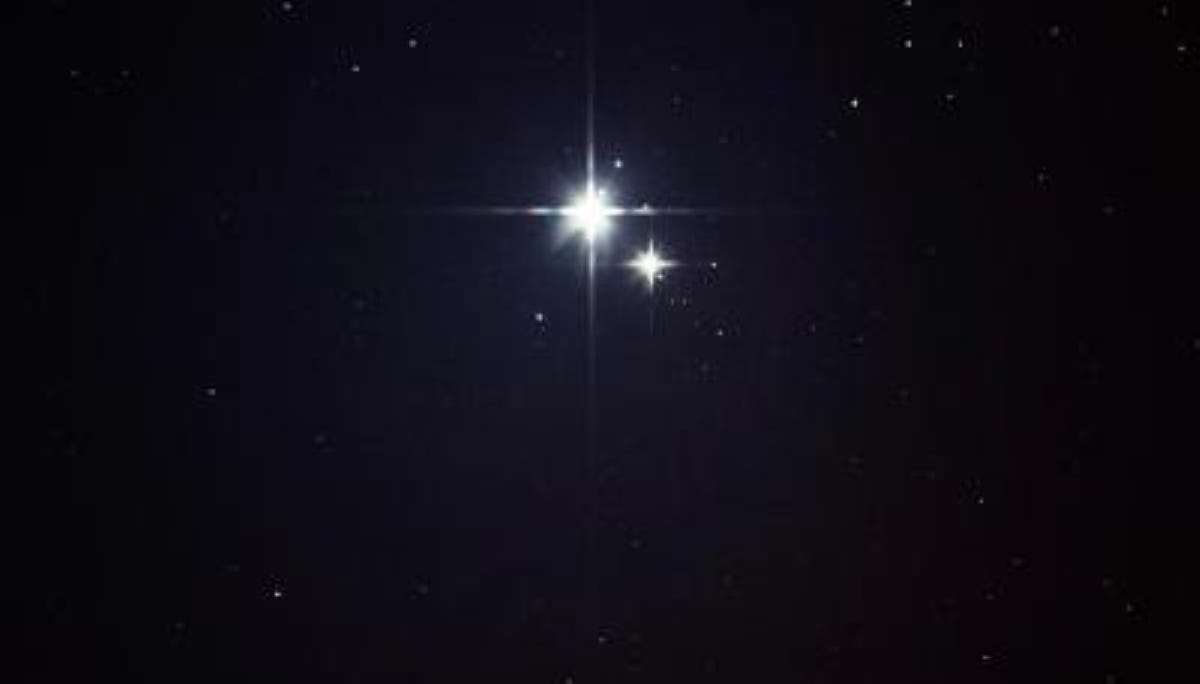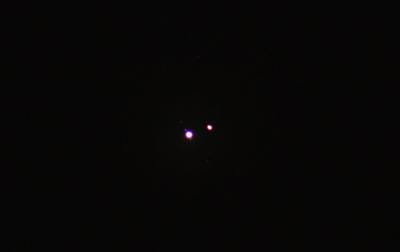
Last night on the winter solstice, literally the darkest day of 2020, my son and I craned our necks skyward on the front lawn.
“Can you see it?” I pointed. “Below the moon to the southwest.”
Just the day before, I’d sunk pretty low, feeling decidedly un-festive and weary of the yoke of fear, anxiety, and loss wrought by a year that seemed to present fresh disasters with the dawn of each new day.
As soon as the sun dipped below the horizon, the bright orbs of Jupiter and Saturn appeared. The distance between them is something like 500 million miles, but from where we stood, the planets seemed almost to collide amongst the stars above. People were calling it “The Christmas Star,” an occurrence unwitnessed for 800 years.
Having no telescope, my son and I glanced at each other once we’d spotted the planets. Had there not been such media fanfare, we would definitely not have noticed the sky that night. It was cold and dark, and the warm living room beckoned. It wasn’t the blinding flash of light I imagined the shepherds following to a humble stable in Bethlehem. Truth is, seen with the naked eye, it was a bit underwhelming.

And yet. As I stood peering into the darkness, a word kept coming to mind: behold.
What does that mean?
A funny little word, behold isn’t something most of us use every day. “Behold, I’m home!” “Behold, child, here is thy dinner lain before thee. Partake and be glad.” It’s clunky and archaic, but it carries a simple meaning: look and see. Pay attention.
In older translations of the Bible, behold was sprinkled through the pages over 1200 times, but as time passed, its use waned. A quick glance at my NIV concordance showed it was not important enough to be referenced, and modern translations like The Message show no uses of the word. Not even one.
Is this because so few things amaze us anymore or because, weary and numb, we’ve stopped paying attention? We’ve stopped beholding. It doesn’t occur to us to venture out and raise our eyes to the sky.
Half a miracle
A few verses in the gospel of Mark recount an odd little event where, in Bethsaida, Jesus is asked to heal a blind man. By this time, He’s fed the multitudes, walked on water, cast out demons, and raised the dead. One more blind man should have been a one-and-done sort of moment.
Instead, we read the only half-miracle recorded in scripture.
“When He had spit on the man’s eyes and put His hands on him, Jesus asked, “Do you see anything?” He looked up and said, “I see people; they look like trees walking around.” ( Mark 8:23–24, NIV)
People like trees? Had there been a miracle glitch? A power outage? Was restoring sight suddenly too hard for the Son of God?
Maybe it was like me and the Christmas star. I’d witnessed something amazing — enormous gaseous balls of rock suspended in the heavens, reflecting the moon’s light back to earth in a stellar array that won’t be seen again for another 80 years.
I saw them through eyes and a sense of sight perfectly tuned and designed, which in itself is an extraordinary feat of creation. There I stood, on legs that held me upright, breathing in the cold December air with no effort. Yet all I could muster was a nod before retreating to my spot on the couch.
Oh me of little faith
God is ever patient with us. He let me get comfortably settled before the text came through. A friend sent me a long-exposure photo of the event and bam! There it was. Now that could get a shepherd’s attention. That was something to behold. Of course, that’s what it had looked like the whole time, but I hadn’t seen it the way the camera caught it. Because it didn’t match my expectations, it was easy to dismiss and shelve as just another hopeless 2020 disappointment.
I love the next two words in verse 25. Once more. Jesus doesn’t scold or walk away in disgust. He doesn’t clench his fists in frustration over the man’s lack of faith or hard-headedness.
Instead of pinching the bridge of His nose and heaving a loud sigh at the blind man’s veiled recognition, once more, Jesus put his hands on the man’s eyes.
“Then his eyes were opened, his sight was restored, and he saw everything clearly.” ( Mark 8:25, NIV)
How often we, too, need an extra boost to see. How often we see but a poor reflection as in a mirror before grace reaches down to clear the mist clouding our vision. Behold. Look and see. Pay attention.
The fact that the longest, darkest night of the year coincided, this year, with the Christmas star can surely be taken as a sign for those who would pay attention to such things, a nudge of grace for a world that pines for a glimmer of hope.
It was just what I needed to lift my dark mood and remove the veil that had caused me, like the blind man, to see people like trees walking. My dimmed vision and the burdens of this difficult year had fooled me into believing things — including myself — were somehow less than.
All year I’ve had a sense that something important was happening, in and around me, but whatever it was has been kept curtained off. That evening, as I watched the lights on the tree twinkle like stars, lines from a familiar Christmas song played in my head:
A thrill of hope, the weary world rejoices; For yonder breaks a new and glorious morn. (from “O, Holy Night”, Adolphe Adam)
As we celebrate the fortuitous advent of Emmanuel, may we be granted eyes to see — a 20/20 vision, if you will — the wonder that surrounds us, even still. The Light that leads us. The grace and hope that carry and sustain us. Fear not, the angels say. Behold.







